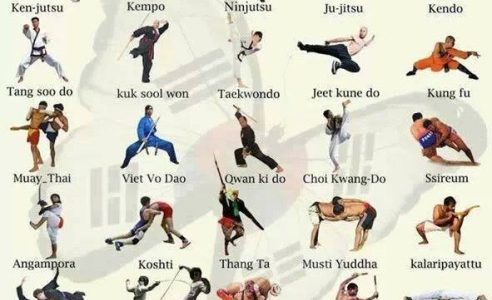Enter The Fascinating Journey Of Martial Arts, Where Old Traditions Hit Contemporary Strategies, Exposing Tricks That Remain To Shape Today's Fight Culture
Enter The Fascinating Journey Of Martial Arts, Where Old Traditions Hit Contemporary Strategies, Exposing Tricks That Remain To Shape Today's Fight Culture
Blog Article
Composed By-Kaufman Fallon
Martial arts have a fascinating background that extends centuries and continents. You could locate it appealing how old practices like Shuai Jiao and Kalaripayattu prepared for modern-day fight strategies. These techniques not only emphasize physical skills yet also mirror the cultures that birthed them. As you explore their evolution, take into consideration just how globalization has changed these standard kinds into hybrid styles. What martial arts training tips do you assume have shaped today's martial arts landscape?
Ancient Martial arts: The Foundations of Combat
As you delve into the world of old martial arts, you'll discover the abundant structures that formed battle strategies across societies. Very early techniques concentrated on Self-Defense and survival, frequently integrating strikes, grappling, and weapons.
In old China, for instance, methods like Shuai Jiao stressed throws and joint locks, while India's Kalaripayattu showcased agility and fluid activity. Japanese samurai developed Kenjutsu, a refined swordsmanship that highlighted discipline and method.
These martial arts offered not just for battle yet also as a means of individual growth, instilling worths like respect and perseverance. The mixing of these strategies with time prepared for the diverse martial arts you see today, each mirroring the special ideologies and demands of its society.
The Cultural Influence on Martial Arts Growth
While martial arts often mirror the practical needs of a society, they likewise embody the cultural worths and ideas of their beginnings. When you explore different martial arts, you'll see how they're affected by religion, approach, and social norms.
For instance, the emphasis on respect and self-control in Japanese martial arts stems from Zen Buddhism and samurai society. In contrast, Brazilian Jiu-Jitsu advertises adaptability and approach, shaped by the need for efficiency in a diverse, multicultural environment.
You might discover that the routines, uniforms, and training methods show a neighborhood's history and identification. By recognizing these social influences, you deepen your appreciation of martial arts and their duty in shaping human experiences around the world.
Modern Adaptations and the Globalization of Martial arts
Martial arts have transformed substantially in current decades, adjusting to modern culture and international impacts. a fantastic read 'll see that conventional kinds have combined with modern methods, creating hybrid styles like MMA. These adjustments cater to varied target markets, making martial arts obtainable and enticing worldwide.
With the surge of social media and electronic systems, you can locate tutorials and competitors from all edges of the world, damaging geographical obstacles. This globalization has actually brought about a shared recognition for different self-controls, from Brazilian Jiu-Jitsu to Taekwondo.
As click for more info engage with these arts, you'll realize they're not practically combat; they advertise physical fitness, self-control, and psychological health.
Inevitably, contemporary adjustments have improved the martial arts landscape, making it a dynamic and developing method.
Final thought
In exploring the history and evolution of martial arts, you reveal a fascinating blend of strategies, cultures, and ideologies. From old techniques like Shuai Jiao and Kalaripayattu to the modern flexibility seen in MMA, martial arts show humanity's pursuit for Self-Defense and individual development. As you involve with these practices, you not just gain abilities however additionally a much deeper recognition for the diverse traditions that form our globe today. So, continue your trip and welcome the art of combat!
